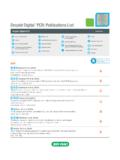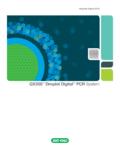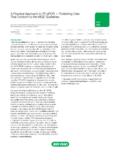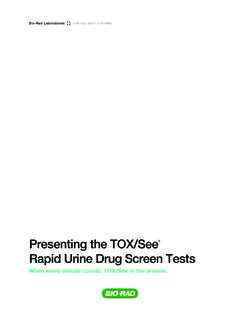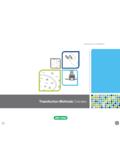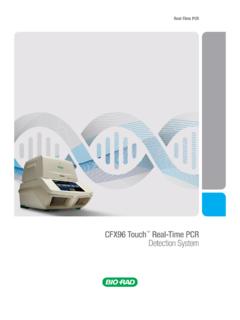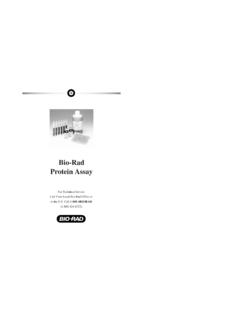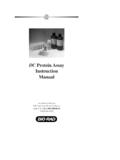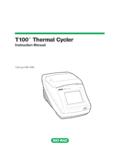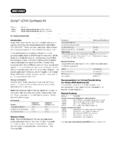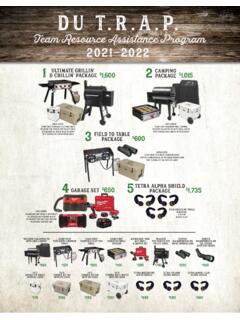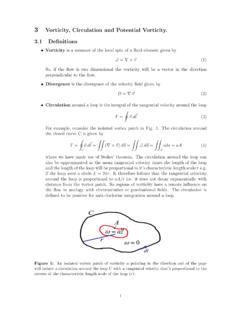Transcription of DC Protein Assay Instruction Manual - Bio-Rad Laboratories
1 DC Protein AssayInstructionManualFor Technical ServiceCall Your Local Bio-Rad Office orin the Call 1-800-4 BIORAD(1-800-424-6723)LIT448D 7/21/98 1:16 PM Page iTable of ContentsSection 1 Introduction and Principle ..1 Section 2 Product Description ..1 Section 3 Materials Required but Not Considerations ..2 Section 4 Reagent Compatibility ..2 Section 5 Instructions .. Assay Protocol .. Assay Protocol ..3 Section 6 Response of Various Proteins ..4 Section 7 Storage ..4 Section 8 Troubleshooting Guide ..5 Section 9 Ordering Information ..6 Section 10 Related Materials ..6 Section 11 References ..7 Section 12 Safety Information.
2 8 LIT448D 7/21/98 1:16 PM Page iSection 1 Introduction and PrincipleThe Bio-Rad DC Protein Assay is a colorimetric Assay for Protein concen-tration following detergent solubilization. The reaction is similar to the well-doc-umented Lowry1assay, but with the following improvements: The reactionreaches 90% of its maximum color development within 15 minutes therebysaving valuable time, and the color changes not more than 5% in 1 hour or 10%in 2 hours after the addition of Assay is based on the reaction of Protein with an alkaline copper tartratesolution and Folin reagent. As with the Lowry Assay , there are two steps whichlead to color development.
3 The reaction between Protein and copper in an alkalinemedium, and the subsequent reduction of Folin reagent by the copper-treated development is primarily due to the amino acids tyrosine and trypto-phan, and to a lesser extent, cystine, cysteine, and ,2 Proteins effect areduction of the Folin reagent by loss of 1, 2, or 3 oxygen atoms, thereby produc-ing one or more of several possible reduced species which have a characteristic bluecolor with maximum absorbance at 750 nm and minimum absorbance at 405 2 Product DescriptionReagent package (catalog number 500-0116) includes:250 ml REAGENT A, an alkaline copper tartrate solution2000 ml REAGENT B, a dilute Folin Reagent5 ml REAGENT S(Sufficient for 500 standard assays or 10,000 microplate assays)The reagent package may be purchased as a kit with a bovine gamma glob-ulin standard (kit catalog number 500-0111) or bovine serum albumin standard(kit catalog number 500-0112).
4 Section 3 Materials Required but Not SuppliedFor standard Assay :13 x 100 mm test tubesReservoir for working reagent (size depends on amount of reagent thatwill be prepared)Pipets accurately delivering 100 l, 500 l, and mlGraduated cylinders or pipets for reagent preparationSpectrophotometer set to 750 nm1 LIT448D 7/21/98 1:16 PM Page 1 vortex mixerPlastic or glass cuvettes with 1 cm path length matched to laboratory spec-trophotometerTest tube rack to hold 13 x 100 mm test tubesFor microplate Assay :Microtiter plates Reservoir for working reagentPipets for reagent preparationPipets accurately delivering 5 l, 25 l, and 200 lMicroplate reader set to 750 Safety ConsiderationsEye protection and gloves should be worn while using this product.
5 ConsultMSDS at the end of this Manual for additional 4 Reagent CompatibilityThe listed compounds were tested and found to be compatible with the Bio-Rad DC Protein Assay . In some cases, the presence of one or more of thesesubstances will effect a change in the response of the Protein to the assayreagents; therefore, the standard should always be prepared in the same bufferas the SDS1% CHAPS2% NP-401% Triton X-1001% CHAPSO1% Thesit 1% Tween 201% Octyl glucoside1% Brij C12E8* M Tris, pH M M M (NH4) M M M Guanidine HCl4 M Sodium azide1 mM DTT (dithiothreitol)Note: The DC Protein Assay is incompatible with 2-mercaptoethanol (BME) BRIJ and TWEEN are registered trademarks of Atlas Chemical.
6 THESIT isa registered trademark of Desitin Arzneimittel GMBH. TRITON is a registeredtrademark of Rohm and Haas.*octaethyleneglycol dodecyl ether2 LIT448D 7/21/98 1:16 PM Page 2 Section 5 Standard Assay Protocol1. Preparation of working reagentAdd 20 l of reagent S to each ml of reagent A that will be needed for the run.(This working reagent A'is stable for one week even though a precipitatewill form after one day. If precipitate forms, warm the solution and not pipet the undissolved precipitate, as this will likely plug the tip of thepipet, thereby altering the volume of reagent that is added to the sample.)If samples do not contain detergent, you may omit step #1 and simply usereagent A as Prepare 3 - 5 dilutions of a Protein standard containing from mg/ml toabout mg/ml Protein .
7 A standard curve should be prepared each time theassay is performed. For best results, the standards should always be preparedin the same buffer as the Pipet 100 l of standards and samples into clean, dry test Add 500 l of reagent A' or A (see note from step 1) into each test Add ml reagent B into each test tube and vortex After 15 minutes, absorbances can be read at 750 nm. The absorbances willbe stable at least 1 hour. (See Troubleshooting Guide for recommendationon using a wavelength other than 750 nm.) Microplate Assay Protocol1. Preparation of working reagentAdd 20 l of reagent S to each ml of reagent A that will be needed for the run.
8 (This working reagent A' is stable for 1 week even though a precipitatewill form after 1 day. If precipitate forms, warm the solution and vortex . Donot pipet the undissolved precipitate, as this will likely plug the tip of the pipet,thereby altering the volume of reagent that is added to the sample.)If samples do not contain detergent, you may omit step #1 and simply usereagent A as Prepare 3 - 5 dilutions of a Protein standard containing from mg/ml to mg/ml Protein . A standard curve should be prepared each time the assayis performed. For best results, the standard should be prepared in the samebuffer as the Pipet 5 l of standards and samples into a clean, dry microtiter 7/21/98 1:16 PM Page 34.
9 Add 25 l of reagent A' or reagent A (see note from step 1) into each Add 200 l reagent B into each well. If microplate reader has a mixing func-tion available, place plate in reader and let the plate mix for 5 seconds. If not,gently agitate the plate to mix the reagents. If bubbles form, pop them with aclean, dry pipet tip. Be careful to avoid cross-contamination of sample After 15 minutes, absorbances can be read at 750 nm. The absorbances willbe stable for about 1 hour. (See Troubleshooting Guide for recommendationon using a wavelength other than 750 nm.)Section 6 Response of Various ProteinsAs with any colorimetric Assay , different proteins will elicit greater or less-er color formation.
10 The following proteins have been assayed with the proteinassay. As demonstrated by the graph, there is a slight variation in color devel-opment with different 7 StorageLyophilized preparations of Protein Standard I (bovine gamma globulin) andProtein Standard II (bovine serum albumin), if included, should be refrigerated uponarrival. These lyophilized preparations have a shelf life of one year at 4 C. Rehydratedand stored at 4 C, the Protein solutions should be used within 60 days. Rehydratedand stored at -20 C, the Protein solutions should be used within 6 A, REAGENT B, and REAGENT S should be stored away fromdirect sunlight at room temperature (25-30 C).
